
Flume rides became the must have ride for amusement parks and theme
parks during the 1960's and 1970's with each park adding these popular
rides to offer thrills and a way to cool off from the summer heat.
Larger parks (and especially theme parks) often had not just one but two
flume rides in order to add capacity and bigger and bigger thrills. In
many cases parks would have a log flume and add a second Hydro Flume
model, which offered more exciting and wetter thrills.
|
|
|
 |
| |
|
|
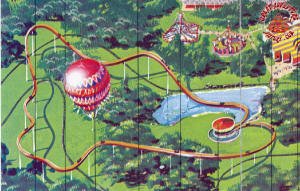 |
 |
 |
| |
|
|
 |
Following the 1974 opening season of Great Adventure, the park looked to
expand and improve for 1975, adding many new attractions. Without a
doubt, one of the most popular attractions of the inaugural season was
the "world's longest" Log Flume, with huge lines of guests waiting to
ride and cool off from the summer heat.

For the 1975 season, a second, even taller flume was added with the
construction of the Hydro Flume. The new ride was built on the opposite
side of the park from the existing Log Flume to help spread out the
crowds in the park. The ride was placed in the wooded area in the middle
of the Great Train Ride. The entrance and the exit for the Hydro Flume
required the installation of a railroad crossing so guests could procede
into the heavily wooded queue area that wound into the station set far
off the main pathways of the park.
 |
 |
| |
|
 |
%20copy_small.jpg) |
|
|
|
 |
 |
| |
|
|
 |
 |
 |
| |
|
|
 |
 |
 |
| |
|
|
 |
 |
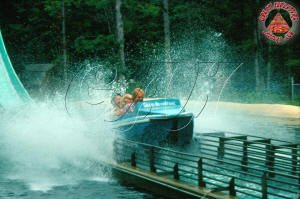 |
| |
|
|
 |
 |
 |
| |
|
|
 |

|
Opening Date: |
|
Late July
1975 |
|
Manufacturer: |
|
Arrow Development Co. |
| Model: |
|
Hydro Flume |
| Lift
Height: |
|
85 feet |
| Track
Length: |
|
1598 feet |
| Speed: |
|
40 mph |
| Number
of Boats: |
|
36 |
| Number
of Guests per Boat: |
|
4 - 5 guests |
| Hourly
Capacity: |
|
2000 guests per hour |
| Gallons
of Water: |
|
350,000 Gallons |
|
Features: |
|
Twin Chutes |
|
|
Spillway Drops |
|
|
Hydro Jumps |
|
|
Rotary Station |
| Ride
Cost: |
|
$2.2 million |
|
| |
|
|
 |
 |
 |
| |
|
|
 |
The Hydro Flume had several major differences from the Log Flume, though
often guests would barely notice them. First (and most distinctive) was
the style of the boats. Unlike the rustic logs of the Log Flume, the
Hydro Flume featured sleek space age style boats which may have lead to
the ride being renamed "The Moon Flume" for the 1976 season. |
 |
| |
 |
| |
|
|
 |
 |
 |
| |
|
|
 |
 |
 |
|
|
|
 |

1975--Hydro
Flume/Hydra Flume
1976-1978--Moon
Flume
1979-1980--Ride
the Rapids
1981--Splash
Down
1982-1989--Kodak’s
Splash Down
1990--Splash
Down
1991-1998--Irrawaddy
Riptide
1999--Riptide
2000-2005--Poland
Springs Plunge
2006--Riptide |
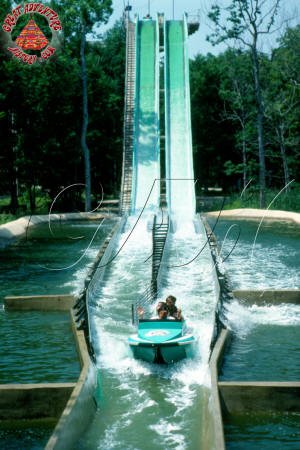 |
| |
|
|
 |
Unlike the Log Flume, the Hydro Flume featured only one large lift hill
and one large drop, with half the ride up high above the tree tops, and
the other half traveling through concrete troughs at ground level. To
help increase capacity, the large, steep drop was actually two chutes
with gates at the top and bottom to send boats down alternating sides.
This also helped reduce the flow of water from the trough so the boats
would roll down the drop rather than float down, allowing safer
operations. Gates at the top could also hold boats to space them out
properly for safety.
When the boats plunged down the drop, they
sped to the bottom where they would encounter a "hydro jump" which sent
them into a moment of air time before plunging into the deeper trough
of water with a large splash. The height, speed and splash were all higher,
faster and wetter than what the Log Flume provided, giving guests more
of what they loved. |
 |
|
|
 |
| |
|
 |
 |
| |
|
|
 |
 |
 |
| |
|
|
 |
 |
 |
| |
|
|
 |
 |
 |
|
|
|
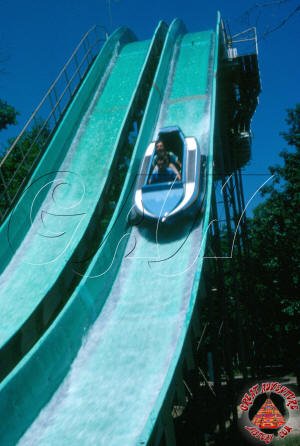 |
The Hydro Flume in
many ways was more of a roller coaster than a flume. Boats went up the
lift hill where they were dropped into the trough of moving water. The
water was pumped up from the main reservoir below the lift hill, then
flowed down the trough which gradually sloped along its course to the
chutes. Boats floated along the trough powered by gravity and carried by
the current.
When the course reached the chutes, the water was
spread out between the two, making it fall in a thin sheet. This allowed
the boats to roll on their wheels, riding on steel plates on the surface
of the fiberglass. Wheels on the sides of the boats kept them straight
as they plunged down.
The lower portion of the flume was a
concrete trough at ground level, in some areas surrounded by
concrete ponds designed to catch the water the boats would splash and
drain it into the main reservoir. Just like the Log Flume, initially
most of the ride was out of view of the guests, travelling through the
heavily wooded area. From below riders on the train could glimpse the
flume's layout, and the upper trough was visible from the Big Wheel and SkyRide.
With the addition of Lightnin' Loops in 1978, the Hydro
Flume became more visible both from the loading platforms for the
coaster and from the ground as more trees were removed. In 1981 with the
addition of Roaring Rapids next to the Flume and behind Lightnin' Loops,
more of the ride was visible to guests. |
 |
| |
|
 |
 |
| |
|
 |
 |
|
|
|
|
 |
 |
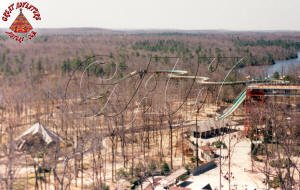 |
| |
|
|
 |
 |
 |
| |
|
The Great Train Ride was removed from Great Adventure, improving access
to the flume as well as opening more land for development. For the 1979
and 1980 seasons the Hydro Flume was known as "Ride the Rapids", but
that name would change with the addition of Roaring Rapids for the 1981
season.
For most of the 1980's the Hydro Flume was known as
"Splash Down", with long lines of guests making their way through the
wooded queue to cool off. Guests loved the park's water rides and even
with the addition of Roaring Rapids in 1981 and Splashwater Falls in
1987, the flumes continued to draw crowds. |
 |
| |
|
 |
 |
| |
|
|
 |
 |
 |
| |
|
|
 |
 |
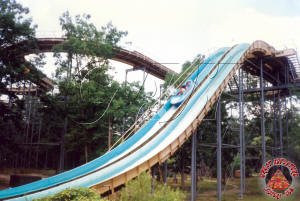 |
| |
|
|
 |
Just like Great Adventure's Log Flume, the Hydro Flume was designed to
maximize throughput. The rotary loading platform (or turntable) afforded
quick and easy loading of boats as they continued to move through the
station, allowing the ride's crew to group guests to fill boats
completely. This provided for a throughput of up to 2,000 guests per
hour, which was more than almost any attraction in the park. |
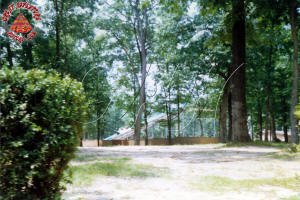 |
| |
|
 |
 |
| |
|
|
 |
 |
 |
| |
|
|
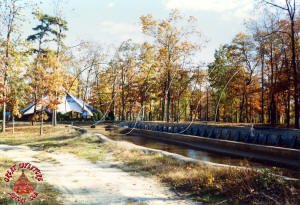 |
 |
 |
| |
|
|
| |
|
|
|
|
 |
|
|
|
|
|
 |
For the 1988 season,
Great Adventure made many changes and updates to attractions in the park
to try and help enhance safety. One of those changes made was the
permanent closure of the outer chute of the Hydro Flume, eliminating the
gate that would direct the boats to alternating sides and reducing the
capacity of the ride slightly. This eliminated the problems of boats
periodically jamming at the top of the drop.
Along with the
closure of the second chute, the "Hydro Jump" at the bottom of the drop
was removed, taking away the pop of air time as the ride hit the water
at the bottom. This eliminated some of the ride's excitement and one of
the features that differentiated it from the Log Flume. |
 |
|
|
|
 |
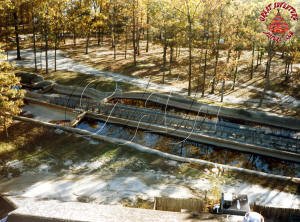 |
|
|
|
|
| |
|
|
 |
 |
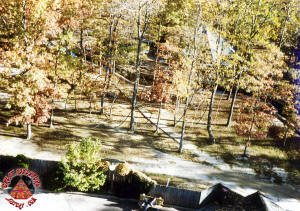 |
| |
|
|
 |
 |
 |
| |
|
|
 |
 |
 |
| |
|
|
 |
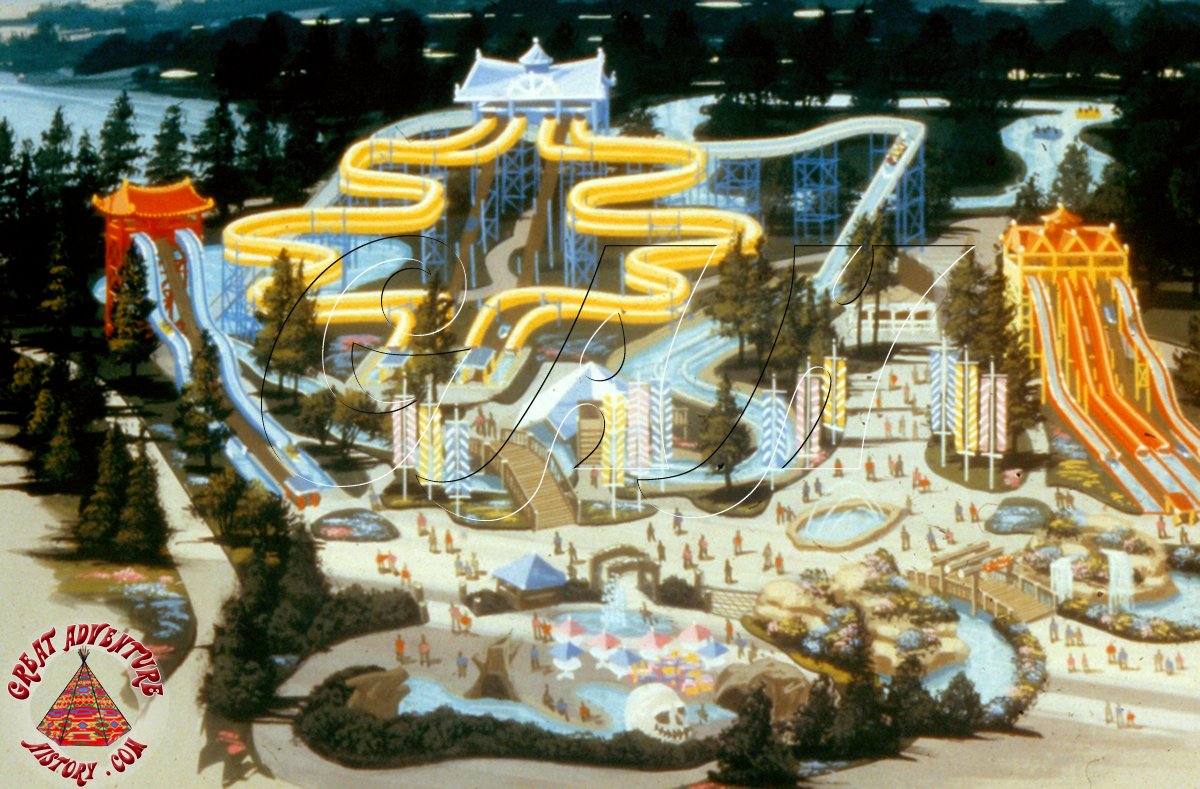 |
| |
 |
| |
|
|
 |
 |
 |
| |
|
|
 |
For the 1991 season, Six Flags
Great Adventure looked to add waterpark type elements to the theme park,
and introduced the new Adventure Rivers area which was built in the area
around and beneath the Hydro Flume. As part of the new themed area the
Hydro Flume got a new look and new identity as it was incorporated with
the new theme.
 |
 |
| |
|
|
 |
 |
 |
| |
|
|
 |
The Adventure Rivers area was themed to the world's great rivers, with
areas and attractions representing North America, Asia, Africa and
Australia. The flume was included in the Asian themed section, taking on
the name Irrawaddy Riptide. The Irrawaddy River in Myanmar is one of the
world's greatest rivers carrying the water from the Himalayas to the
Indian Ocean.
The area in the middle of the flume became home to
the largest and most visible tower of the new area, the Asian Tower
which featured four long, twisted yellow tubes and filled much of the
area that had just been the wooded infield. New bridges were built to
allow guest to cross the concrete trough of the flume to access the
slide complex. |
 |
| |
|
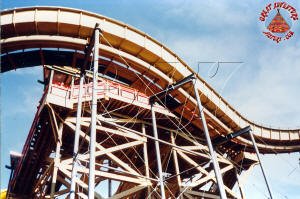 |
 |
| |
|
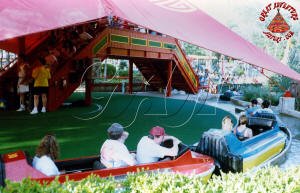 |
 |
| |
|
|
 |
 |
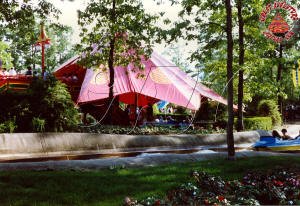 |
| |
|
|
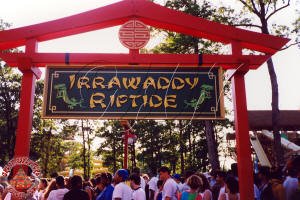 |
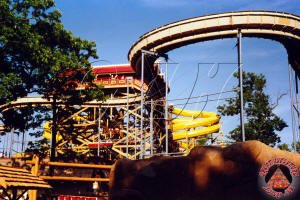 |
 |
| |
|
|
 |
 |
 |
| |
|
|
 |
The flume was cosmetically
changed to make it fit the new theme, getting a bright red canvas roof
for the station to replace the old blue and white one. The canvas
featured round gold designs, and bright new banners and signage were
added to the queue to give the flume a new look and feel. The addition
of the other water rides of Adventure Rivers around the flume meant more
guest traffic than ever, as well as making the ride more visible with so
many trees having been removed. |
 |
| |
|
|
 |
 |
 |
| |
|
|
 |
 |
 |
| |
|
|
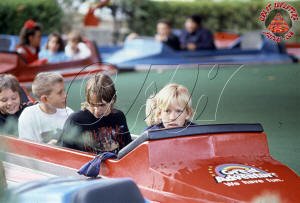 |
 |
 |
| |
|
|
 |
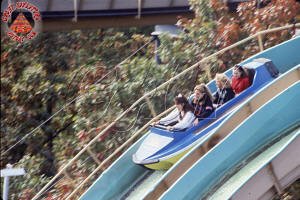 |
 |
| |
|
|
 |
 |
 |
| |
|
|
 |
 |
 |
| |
|
|
 |
The new attractions
added as part of Adventure Rivers were fun, but suffered from low
throughput, and many guests were disappointed that they were required to
be fully clothed to ride them in the rubber rafts instead of being real
waterslides like those found in waterparks. The flume and Congo Rapids
rides which had been included in the Adventure Rivers area continued to
be popular attractions over time, while the slides quickly became passé.
As the 1990's came to a close, so did the time for Adventure Rivers.
Other theme parks were adding full waterparks either as separately gated
aquatic parks or as add-on's to their theme park. Six Flags management made plans
to do the same at Great Adventure and wanted to expand the theme park
with more rides and attractions to try and grow attendance. |
 |
| |
|
 |
 |
| |
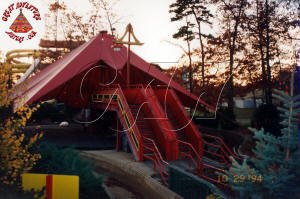 |
| |
|
|
 |
 |
 |
| |
|
|
 |
 |
 |
| |
|
|
 |
For the 1999 season
the slides of Adventure Rivers were removed to make room for Great
Adventure's second children's area, Looney Tunes Seaport which filled
the area under the flume. The flume bisected part of the new section, so a
new bridge was built across the area at the bottom of the drop. This
allowed non riders to watch their friends splash down as well as
offering a new access point that was fully accessible for strollers and
wheelchairs. The staircases installed for Adventure Rivers were impractical
for guests looking to get into the children's area. |
 |
| |
|
 |
 |
| |
|
|
 |
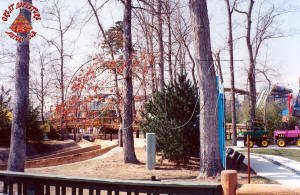 |
 |
| |
|
|
 |
With the addition of
the Looney Tunes Seaport, the flume's trough was realigned to make more
room for the new rides being installed. The flume's station was
repainted in blue and yellow and the ride took on the shortened name
"Riptide" now. While the Asian Slides had been removed, the footings for
the supports that had been installed in the reservoir remained.
In 2000, Six Flags Hurricane Harbor opened as part of the Great
Adventure complex, and with the addition of a full waterpark and the
additional strain of staffing it along with the 25 new rides added in
1999 meant that the flume would operate on a more limited basis. It now
only operated in the peak summer season and even then only on the
busiest days when staff was available. |
 |
| |
|
 |
 |
| |
|
 |
 |
| |
|
|
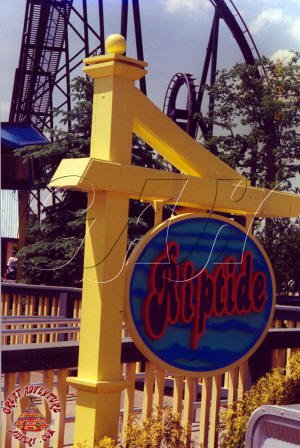 |
 |
 |
|
|
|
 |
 |
| |
|
|
 |
While Riptide was
relegated to a more limited role in the park, it was saved for many
seasons through sponsorship. Poland Spring water sponsored the ride from
2000 through 2005, when it took on the name Poland Spring Plunge.
Additionally another source of revenue was added with coin operated
sprayers being placed on the bridge, giving guests a chance to spend
their quarters on soaking their friends (or strangers) as they passed
underneath. |
 |
|
|
|
 |
 |
| |
|
|
 |
 |
 |
| |
|
|
 |
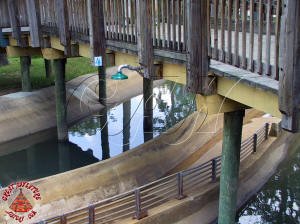
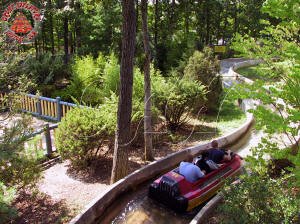

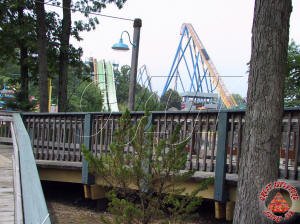
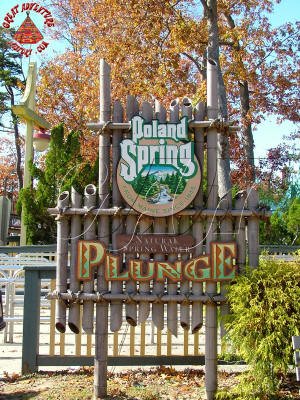 |
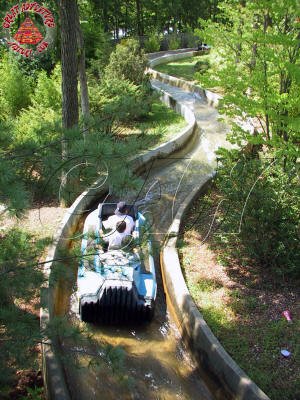 |
| |
|
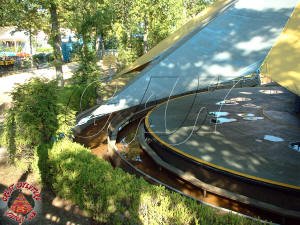 |
 |
| |
|
 |
 |
| |
|
 |
 |
| |
|
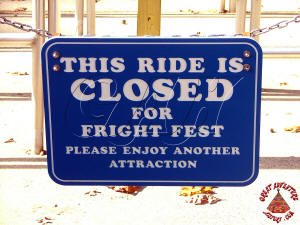 |
 |
| |
|
|
 |
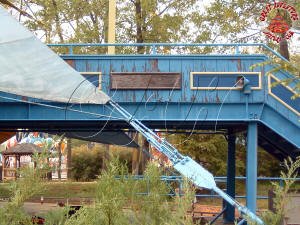 |
 |
| |
|
|
 |
 |
 |
| |
|
|
 |
 |
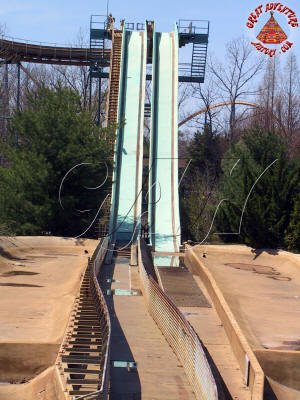 |
| |
|
|
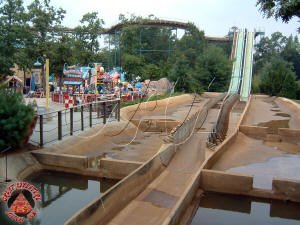 |
 |
 |
| |
|
|
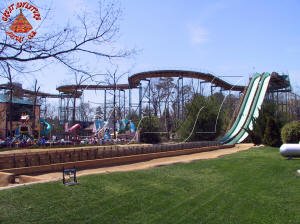 |
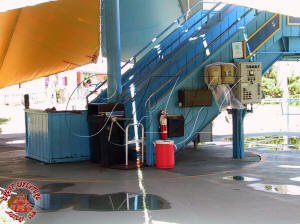 |
 |
| |
|
|
 |
 |
 |
| |
|
|
 |
 |
 |
| |
|
|
 |
 |
 |
| |
|
|
 |
 |
 |
| |
|
|
 |
 |
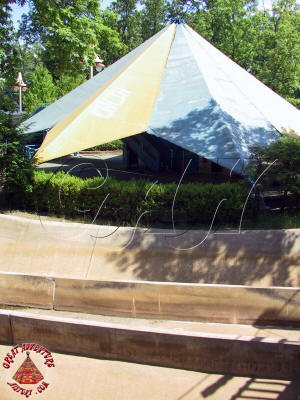 |
| |
|
|
 |
After thirty years of operation, the flume was starting to show its age.
The ride was requiring more maintenance each season, with large sections
of the trough requiring repair or replacement. In 2005 the side of
the drop that was still open needed replacement, including major work taking
place on the fiberglass, the concrete at the base, and the installation
of new steel rails for the wheels. The rising maintenance costs along
with the declining fortunes of Six Flags as a company at the time meant
that rides nearing the end of their life or with declining popularity
were often on the chopping block. |
 |
| |
|
 |
 |
| |
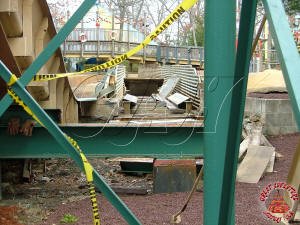 |
| |
|
|
 |
 |
 |
| |
|
|
 |
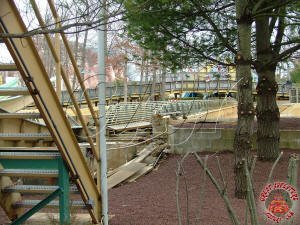 |
 |
| |
|
|
 |
 |
 |
| |
|
|
 |
 |
 |
| |
|
|
 |
 |
 |
| |
|
|
 |
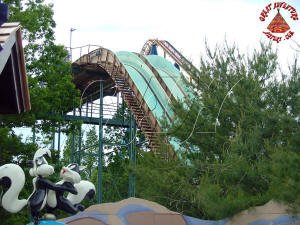 |
 |
| |
|
|
 |
 |
 |
| |
|
|
 |
 |
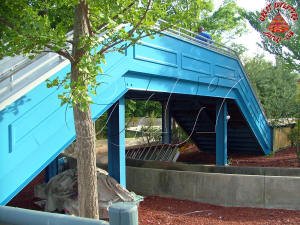 |
| |
|
|
 |
 |
 |
| |
|
|
 |
 |
 |
| |
|
|
 |
 |
 |
| |
|
|
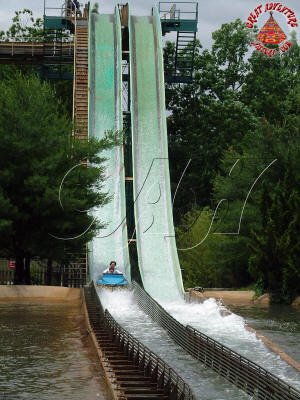 |
 |
 |
| |
|
|
 |
 |
 |
| |
|
|
 |
 |
 |
| |
|
|
 |
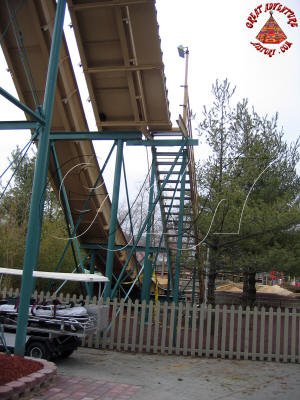 |
 |
| |
|
|
 |
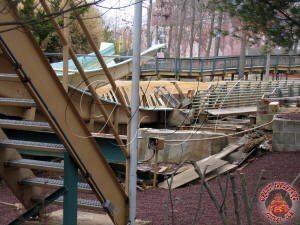 |
 |
| |
|
|
 |
 |
 |
| |
|
|
 |
 |
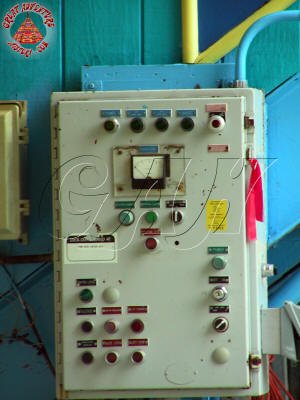 |
| |
|
|
 |
 |
 |
| |
|
|
 |
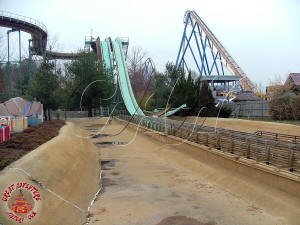 |
 |
| |
 |
| |
|
|
 |
 |
 |
| |
|
|
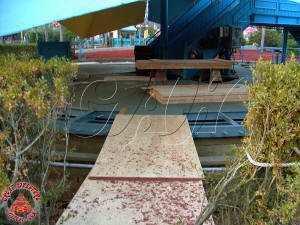 |
 |
 |
| |
|
|
 |
 |
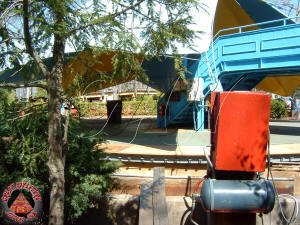 |
| |
|
|
 |
 |
 |
| |
|
|
 |
 |
 |
| |
|
|
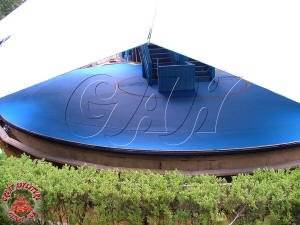 |
 |
 |
| |
|
|
 |
 |
 |
| |
|
|
 |
The Poland Springs sponsorship of the flume ended in 2005, so for the
2006 season it went back to the Riptide name. Once again a great deal of
time and money was spent on maintaining the ride though it only operated
for a few months during peak season.
The new management of Six
Flags was looking to cut expenses, and with the limited operations,
spiraling costs and redundancy of the Hydro Flume, along with plans for
a new themed section, a decision was made to remove the ride after
thirty one years of delighting guests. |
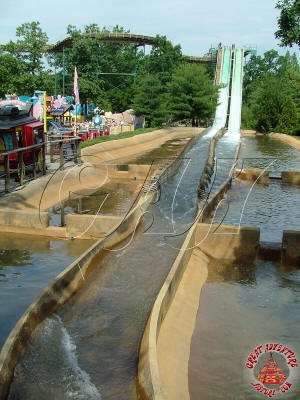 |
| |
|
 |
 |
| |
|
|
 |
 |
 |
| |
|
|
 |
 |
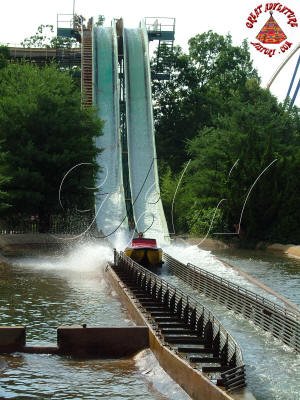 |
| |
|
|
 |
The flume was removed in the 2006-2007 off season to make way for the
new Wiggles World area of the park which took over part of the Looney
Tunes Seaport area as well as the flume's queue and ride area.
 |
 |
| |
|
|
 |
 |
 |
| |
|
|
 |
 |
 |
| |
|
|
 |
 |
 |
| |
|
|
 |
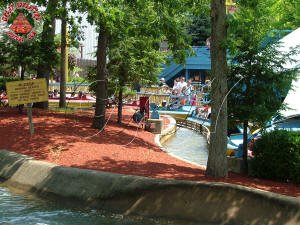 |
 |
| |
|
|
 |
 |
 |
| |
|
|
 |
 |
 |
| |
|
|
 |
 |
 |
| |
|
|
 |
 |
 |
| |
|
|
 |
 |
 |
| |
|
|
 |
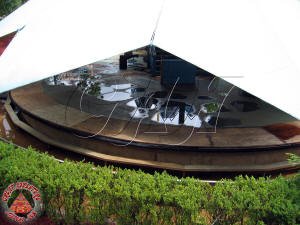 |
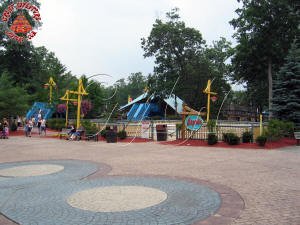 |
| |
|
|
 |
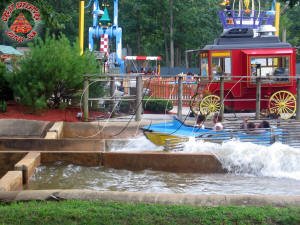 |
 |
| |
|
|
 |
 |
 |
| |
|
|


|
 |
| |
|
|
 |
 |
 |
| |
|
|
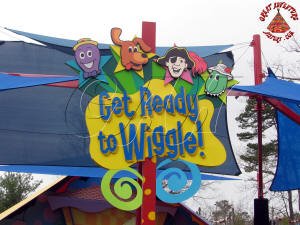 |
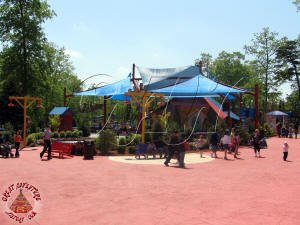 |
 |
| |
|
|
 |
While the flume was
removed to create Wiggles World, the former station and platform became
the new Wiggle's World stage. The canvas structure was painted in bright
new colors to fit the new theme and rows of seats were installed in what
had been the ride's queue area.
Even years after the Hydro Flume's removal, evidence of the ride's
existence can still be found today especially when viewing a show taking
place on the elevated circular stage In Safari Kids which once was the
Hydro Flume's station platform. |
 |
| |
|
%20copy_small.jpg) |
%20copy_small.jpg) |
| |
|
|
%20copy_small.jpg) |
%20copy_small.jpg) |
%20copy_small.jpg) |
| |
|
|
 |
 |
 |
|
|
|
|
|
|
|
|
 |
|
|
|
|
 |
 |
 |
|
|
|
|
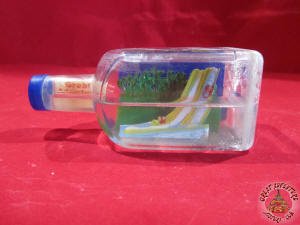 |
 |
 |
|
|
|
|



